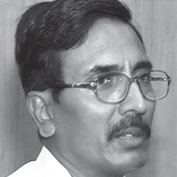The coast is an interfacial or transitional zone where sea meets exposed landmass, or the reverse i.e., the zone where exposed landmass meets the sea. Except the land-locked countries, countries around the world and islands have coasts. Continuity of such coasts comprising exposed coastal landmass is known as ‘coastline’. In case of islands too – be it nearer to the coast (like Talsari in Odisha, or Hope Island in Andhra Pradesh, and many likewise) or offshore, like Andamans or Lakhshadweep, there has to be a ‘coastline’.
The very natural wealth of any maritime nation or island is coast, and its natural components that sustain its natural activities is called the ‘Coastal Ecosystem’. Seen from a considerable height, the apparently serene coastline is actually a series of unique coastal ecosystems that act as the ‘life support systems’ on earth.
The coastal ecosystem absorbs carbon dioxide (CO2) from the atmosphere and releases oxygen (O2) that living beings like us breathe. So, from that point of view, coastal ecosystems of a coastline act as ‘nature’s industry’ that provide ‘service’ to sustain life on earth – the ‘coastal ecosystem service’.
What are the capital services that coastlines provide?
The components of a coastal ecosystem are:(a) Aquaculture (culture fishery & oyster production); (b) capture fishing (mostly demarshal) activities; (c) Agriculture; (d) Coastal Eco-Tourism; (e) Open sea and coastal activities like snorkeling, scuba diving etc. (f) mangrove generation for checking of erosion; (g) corals and coralline algae for mitigating ocean acidification; (h) offshore wind and (i) uninterrupted sunlight along the coastline are un-explored coastal and offshore energy (non-conventional) resources.
Mainland India comprises 9 coastal states among which West Bengal, Odisha, Andhra Pradesh and Tamil Nadu are located in the eastern part facing the Bay of Bengal. A part of Tamil Nadu state located at the extreme south of India faces the Indian Ocean. On the other hand, Kerala, Karanataka, Maharashtra, Goa and Gujarat are located on the western side of India, facing the Arabian Sea. At the mainland, the coast of Puducherry (Pondicherry), facing the Bay of Bengal, and the coast of Daman & Diu facing the Arabian Sea, both belong to the Union Territory (UT) administration – so do the two major islands of India – Andaman & Nicobar Islands in the Bay of Bengal and Lakshadweep & Minicoy in the Arabian Sea. Apart from these big island clusters, there are 667 islands geographically located in the Bay of Bengal and 508 islands located in the Arabian Sea. Many of these islands are uninhabited though. The total length of the Indian coastline is reported to be 7516.6 km. But changes constantly happen with the perpetual erosion and accretion (deposit of coastal sands and soil), which are a part of natural coastal changes. This also has an effect on the coastline.
For example, while the total length of the Indian coastline, made on the basis of summation of data of the coastal state/UT island-wise is found to be 7516.6 km (Source: Annual Report, 2012-2013, Ministry of Home Affairs, Govt. of India), this differs with that of the total length of the Indian shoreline determined as 8413.9 km by the Space Applications Centre, ISRO (Indian Space Research Organisation), Ahmedabad, and Central Water Commission of the Ministry of Water Resources, Govt. of India)
Coastal Resource Management
By straightforward definition, Coastal Resource Management (CRM) is an appropriate management of coastal\ and marine resources so that these resources can be sustainably available for future generations – even after being exploited by the present generation. Unless it is implemented throughout the nation’s coastline, CRM is just a concept. It has many dimensions; (a) to explore, find and categorise all natural resources available in the coastal zone; (b) to determine the method of exploration of resources in such a manner that such marine and coastal resources could be explored for an indefinite period of time; (c) to examine the possibility and suitability of exploration of non-conventional energy and food availability from the coastal ecosystem; (d) to implement the socio-economic ventures in order to create, renew and protect the ‘natural wealth’ available in the coastal ecosystem; (e) to modify the existing way of ‘coastal tourism’ practice by converting the same into ‘coastal ecotourism’ practice; and (f) to find ways of capacity building of the existing nonconventional energy along the coastline.
The unexplored sectors
In addition to the conventional sector of fishing from the coastal and offshore waters and culture of other aquacultural produce like clams, oyster, pearl and so on that are used as both local and exportable food items, the following sectors require immediate action:
- Development of coordinated coastal agriculture, aquaculture and forestry
- Development of coordinated mangrove plantation and research
- Development and management of coral protection areas
- Production, development and distribution of offshore wind and solar energy, in addition to, and without disrupting the existing infrastructure of exploring the wind and solar energy; this has to be done in the style (with required modification, if any and where appropriate) of conventional thermal and hydro-power generation.
A maritime nation having a lengthy coastline can safely create provisions for employment in a big way. This, if implemented in a proper manner, could mitigate India’s big problems of economic growth and societal development. India would then be an example to the world. But the first and foremost requirement is political will.


